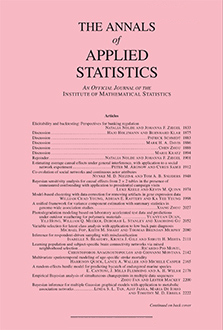Abstract
There are many sources of error in counting votes: the apparent winner might not be the rightful winner. Hand tallies of the votes in a random sample of precincts can be used to test the hypothesis that a full manual recount would find a different outcome. This paper develops a conservative sequential test based on the vote-counting errors found in a hand tally of a simple or stratified random sample of precincts. The procedure includes a natural escalation: If the hypothesis that the apparent outcome is incorrect is not rejected at stage s, more precincts are audited. Eventually, either the hypothesis is rejected—and the apparent outcome is confirmed—or all precincts have been audited and the true outcome is known. The test uses a priori bounds on the overstatement of the margin that could result from error in each precinct. Such bounds can be derived from the reported counts in each precinct and upper bounds on the number of votes cast in each precinct. The test allows errors in different precincts to be treated differently to reflect voting technology or precinct sizes. It is not optimal, but it is conservative: the chance of erroneously confirming the outcome of a contest if a full manual recount would show a different outcome is no larger than the nominal significance level. The approach also gives a conservative P-value for the hypothesis that a full manual recount would find a different outcome, given the errors found in a fixed size sample. This is illustrated with two contests from November, 2006: the U.S. Senate race in Minnesota and a school board race for the Sausalito Marin City School District in California, a small contest in which voters could vote for up to three candidates.
Citation
Philip B. Stark. "Conservative statistical post-election audits." Ann. Appl. Stat. 2 (2) 550 - 581, June 2008. https://doi.org/10.1214/08-AOAS161





